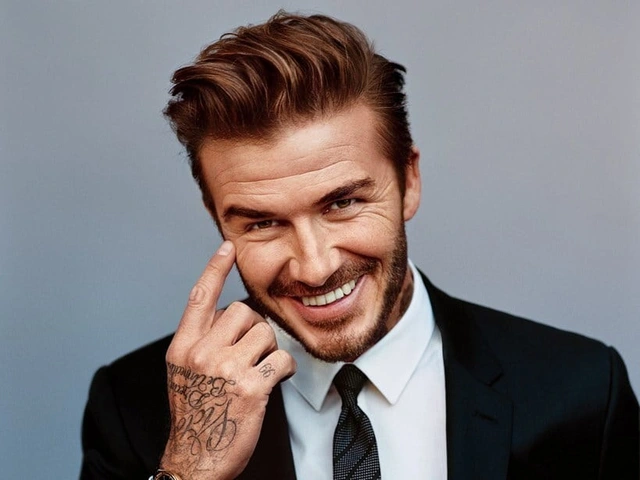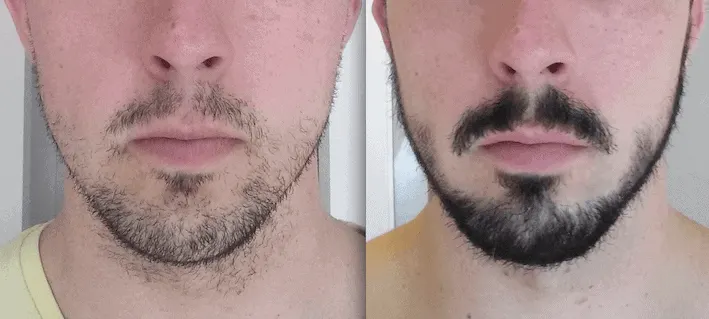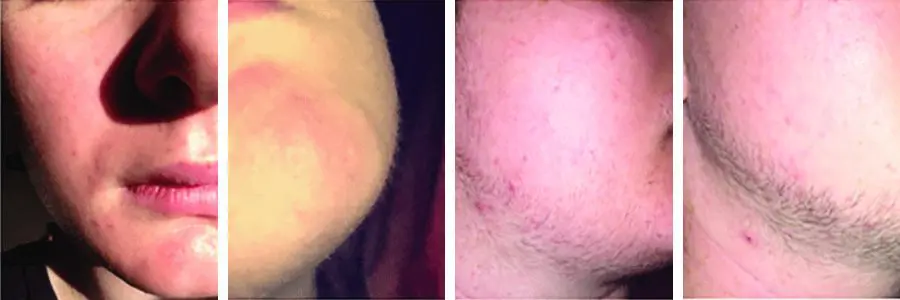Is your luscious mane looking a little less, well, luscious lately? Thinning hair can leave us feeling self-conscious and longing for those days of cascading locks. But before you consider diving into the world of scalpels and stitches, let’s explore some natural ways to thicken your hair without surgery! So, put away the worry wigs and ditch the despair dyes. It’s time to embrace your natural beauty and unlock the thickness potential hiding within your strands. Get ready to discover the power of gentle care, smart techniques, and a healthy dose of hair-loving know-how.

CAUSES OF HAIR THINNING
There are numerous factors contributing to hair thinning:
HEREDITY
Hair thinning can be attributed to various factors, encompassing both genetic and environmental influences. One significant contributor is hereditary predisposition, where individuals may inherit a susceptibility to hair loss from their parents or ancestors. Hormonal changes, such as those occurring during puberty, pregnancy, and menopause, can also play a crucial role in hair thinning.
MEDICAL CONDITION
Additionally, certain medical conditions and treatments may contribute to the weakening of hair strands. Conditions like thyroid disorders, alopecia areata, and polycystic ovary syndrome (PCOS) can lead to hair thinning. Medical treatments such as chemotherapy, radiation therapy, and certain medications may have hair loss as a side effect, causing temporary or permanent thinning.
NUTRITIONAL DEFICIENCIES
Nutritional deficiencies can impact the health of our hair, and insufficient intake of essential vitamins and minerals, such as iron, zinc, and biotin, may contribute to hair thinning. Poor diet and unhealthy lifestyle choices can exacerbate these deficiencies and further compromise hair health.
ENVIRONMENTAL FACTORS
Environmental factors, such as exposure to pollutants, harsh chemicals, and excessive heat from styling tools, can damage the hair cuticle, leading to thinning over time. Additionally, excessive tension on the hair shaft, caused by tight hairstyles or constant pulling, may contribute to gradual thinning, known as traction alopecia.
Understanding the multifaceted reasons behind hair thinning allows individuals to adopt targeted strategies, ranging from lifestyle adjustments to medical interventions, in order to address and manage this common concern.
WHAT THICKENS HAIR?
The manifestation of hair loss varies based on an individual’s gender. An illustration of this distinction is found in the report by the British Association of Dermatologists, which notes that female pattern hair loss commonly emerges in individuals aged 30 and above. This condition results in the thinning of hair primarily on the top of the head, accompanied by the potential for hair in other areas to appear shorter. Regrettably, there is presently no cure for this type of hair loss.
Therefore, treating hair loss is extremely important.
HOME REMEDIES TO THICKEN HAIR
CASTOR OIL
Castor oil is renowned for its potential to treat and thicken hair. Packed with nutrients such as omega-6 fatty acids, vitamin E, and proteins, castor oil promotes hair health by nourishing the hair follicles and encouraging circulation to the scalp. Massaging warm castor oil into the scalp can stimulate hair growth and strengthen the roots. The oil’s humectant properties lock in moisture, preventing dryness and breakage, ultimately contributing to thicker, healthier strands.
ALOE VERA
Aloe vera, with its soothing and moisturizing properties, is another home remedy worth considering. Applying aloe vera gel directly to the scalp can help maintain a healthy scalp environment, potentially reducing hair thinning. Moreover, aloe vera contains enzymes that may promote a clean and balanced scalp, aiding in the prevention of dandruff and other scalp issues. Its natural cooling effect can also provide relief from irritation, making it an excellent addition to a holistic hair care routine.
EGGS
Eggs are rich in protein, a vital component for hair health. Creating a hair mask by combining beaten eggs with other ingredients like olive oil or honey can provide a protein boost when applied to the hair and scalp. The proteins in eggs contribute to strengthening hair strands and preventing breakage. This DIY hair mask not only nourishes the scalp but also adds a lustrous shine to the hair, making it a simple yet effective solution for promoting overall hair health.
FENUGREEK SEEDS
Fenugreek seeds, soaked and ground into a paste, have been traditionally used to strengthen hair and encourage growth. Applying this paste to the scalp and leaving it on for a designated time before washing can be beneficial. Fenugreek seeds are rich in proteins and nicotinic acid, which are believed to stimulate hair follicles and promote hair growth. The application of this fenugreek paste provides a nourishing treatment, aiding in the reduction of hair thinning and enhancing the overall health of the hair and scalp.
HAIR CONDITIONER
The inclusion of essential oils, such as lavender or rosemary, in a carrier oil can contribute to improved hair thickness. These oils are believed to stimulate hair follicles and promote healthier strands. Essential oils like lavender and rosemary are known for their aromatic and therapeutic properties, and when combined with a carrier oil, they create a potent blend for promoting hair thickness. The application of this oil mixture not only stimulates the hair follicles but also imparts a delightful fragrance, offering a holistic approach to enhancing both the physical and sensory aspects of hair care.
BALANCED DIET
Maintaining a well-balanced diet rich in vitamins and minerals is essential for overall hair health. Adequate hydration, reduced stress levels, and gentle hair care practices also play crucial roles in preventing hair thinning and promoting thickness naturally. In addition to external remedies, internal factors play a vital role in maintaining hair health. A nutritious diet with a variety of vitamins and minerals, coupled with proper hydration and stress management, creates a foundation for preventing hair thinning and fostering natural thickness. Embracing gentle hair care practices further complements these efforts, contributing to a holistic approach that nurtures both the internal and external aspects of hair well-being.
HAIRSTYLING AND SCALP MASSAGE
The American Academy of Dermatology Association (AAD) highlights that thin hair is more vulnerable and prone to damage. To address hair loss concerns, the AAD recommends using a mild shampoo that retains moisture, employing a moisturizing conditioner to minimize breakage and split ends, applying a leave-in conditioner post-wash to prevent frizz and breakage, and using a microfiber towel when blow-drying.
The AAD advises against the use of curling or flat irons, as they can weaken the hair. Additionally, styling choices like frequently pulling the hair back in a ponytail or bun may contribute to permanent hair loss over time.
Massaging your scalp isn’t just relaxing – it can make your hair thicker and healthier too! When you massage your scalp, it gets the blood flowing, sending oxygen and important nutrients to your hair roots. This helps your hair grow and become stronger. Scalp massage also spreads the natural oils your scalp makes, stopping it from getting too dry and keeping your scalp healthy. The massage itself can make your hair roots stronger, reducing the chance of breakage. So, if you make scalp massages a regular part of your hair care routine, you’ll be giving your hair a simple and effective way to become thicker and stay healthy.
MICRONEEDLING
Microneedling, a simple and effective technique, can be a helpful way to make your hair thicker.
Here’s how it works: tiny needles are used to create small punctures on your scalp. This might sound a bit strange, but it’s not painful! These tiny punctures stimulate your scalp, encouraging better blood flow and promoting the absorption of essential nutrients. This boost in blood circulation can make your hair roots stronger and encourage hair growth.
Microneedling also helps in the absorption of hair products, making them more effective. So, by trying microneedling, you’re giving your hair a little extra push to become thicker and healthier.
MEDICATIONS TO THICKEN HAIR
The University of Michigan Health System mentions two medications that can help slow down hair thinning and make hair shafts thicker:
Minoxidil (Rogaine): Available without a prescription for both men and women, this medication can be sprayed or rubbed into the scalp twice a day. It’s important to note that Rogaine doesn’t cure baldness, and using it excessively won’t make hair grow faster. If someone stops using Rogaine, the new hair gained may be lost within a few months.
Finasteride (Propecia): This prescription treatment involves taking a daily pill, but it is not recommended for females. If you want to learn more about finasteride, you can find additional information here.
COLD CAPS
Cold caps, also known as scalp cooling, is a method that may help in preventing hair loss and maintaining hair thickness during certain medical treatments like chemotherapy. These caps are worn on the head before, during, and after chemotherapy sessions. The cold temperature constricts the blood vessels in the scalp, reducing blood flow and drug delivery to hair follicles. This process is believed to help protect the hair follicles from the effects of chemotherapy, potentially minimizing hair thinning or loss. While not a guaranteed solution, many individuals undergoing chemotherapy have found cold caps to be a valuable option in preserving their hair thickness and, in turn, supporting a positive self-image during a challenging time.
It’s essential to consult with healthcare professionals to determine the suitability of cold caps based on individual circumstances and treatment plans.
PRODUCTS TO THICKEN HAIR
Numerous brands offer supplements and shampoos that claim to promote hair growth and thickness. Nevertheless, it’s crucial to consult with a healthcare professional before making a purchase. Certain supplements and shampoos may interact with medications, and the guidance of a dermatologist can assist individuals in making an appropriate and safe choice.
Here are some products that are available to purchase online:
Viviscal Hair Growth Supplements: Viviscal Hair Growth Supplements are a popular choice for those seeking to enhance hair health. Packed with essential nutrients such as biotin, zinc, and marine extracts, these supplements aim to nourish hair follicles from within. Users often praise Viviscal for its potential to promote thicker and fuller hair. While individual results may vary, the blend of ingredients in Viviscal is designed to address various factors that contribute to hair thinning. As with any supplement, it’s advisable to consult with a healthcare professional before incorporating it into your routine to ensure it aligns with your specific needs and health conditions.

Bosley Hair Growth Vitamin Supplements: Hair Growth Vitamin Supplements are formulated to provide essential nutrients that support the health and vitality of hair. These supplements often include a combination of vitamins, minerals, and botanical extracts known for their potential benefits to hair growth, such as biotin, vitamin E, and collagen. While these supplements are widely available and can be found in various brands, it’s important for individuals to choose a product based on their specific needs and consult with a healthcare professional if necessary. Incorporating these supplements into a balanced and healthy lifestyle may contribute to promoting stronger, thicker, and more resilient hair over time.

Nutrafol Women Hair Growth Supplements: Women’s Hair Growth Supplements are specially formulated to address the unique needs of women experiencing hair thinning or seeking to enhance the health of their hair. These supplements often contain a blend of vitamins, minerals, and botanical ingredients known for their potential to support hair growth and thickness. Ingredients such as biotin, collagen, and various antioxidants are commonly found in these formulations. While individual results may vary, women’s hair growth supplements aim to provide comprehensive nourishment to the hair follicles, contributing to stronger and healthier strands. It is advisable for women to consult with a healthcare professional before adding such supplements to their routine to ensure compatibility with their specific health conditions and needs.

Nizoral Anti-Dandruff Shampoo: Considered the best shampoo to thicken hair, this product contains ketoconazole, renowned for its anti-androgen and antifungal properties. Specifically designed to address conditions like dandruff, it not only combats infections but may also assist in controlling hair loss associated with dandruff. The recommended usage by the company is twice a week for optimal results. Besides Nizoral, there are many shampoos on the market designed to promote hair growth and thickness.

Megafood Skin, Nails & Hair 2: For those wondering how to thicken hair women, these supplements offer a blend of biotin, vitamins, zinc, and selenium, promoting the strengthening of both hair and nails. Free from gluten, dairy, and soy, the recommended daily intake is two tablets, providing a convenient solution for those seeking hair and nail support. Available in 60 or 90 tablet bottles, these supplements start at approximately $24.

FAQ
1. Can thin hair become thick again?
Yes. While complete restoration to original thickness might be challenging, various treatments, lifestyle changes, and hair care practices can improve the appearance and health of thin hair.
2. Is long hair bad for thin hair?
No. The length of hair, whether short or long, does not impact the biochemical processes occurring within the scalp.
3. Is thin hair more attractive?
Not necessarily. Beauty and attractiveness are subjective, varying from person to person. Some may find thin hair attractive, while others may prefer thicker hair.
4. Is Thick or Thin hair healthier?
Not necessarily. Hair thickness alone is not necessarily an indicator of health; it varies among individuals.
CONCLUSION
The pursuit of thicker hair involves a multifaceted approach guided by dermatological insights. Dermatologists emphasize the importance of adopting a comprehensive hair care routine that includes gentle cleansing, nourishing treatments, and protective measures against potential damage. Alongside these practices, dermatologists may recommend specific products, medications, or procedures tailored to individual needs. By combining expert advice with consistent and personalized care, individuals can work towards achieving and maintaining healthier, thicker hair under the guidance of dermatological expertise.





